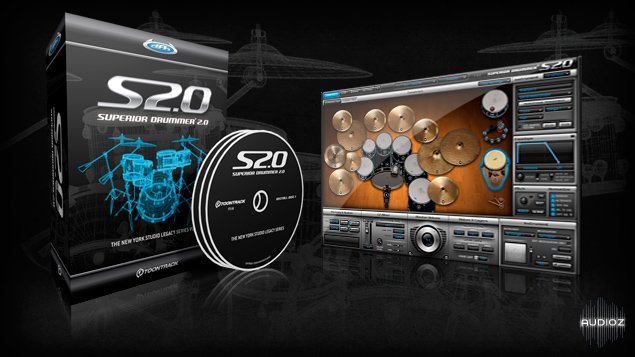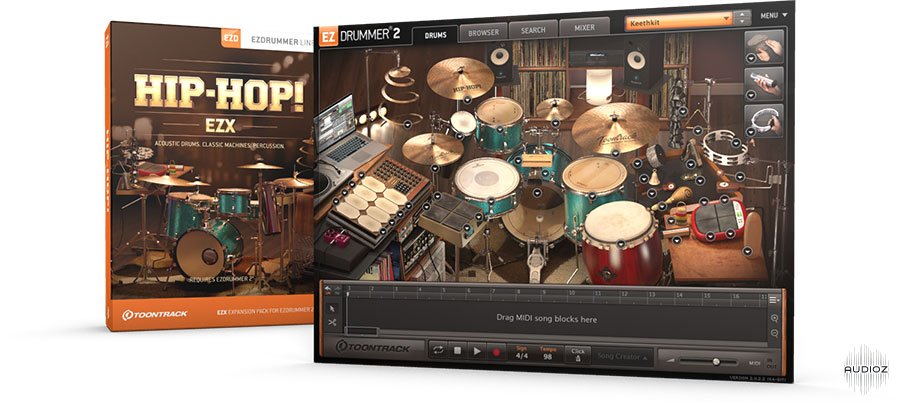
No puedo activar windows defender windows 10. Toontrack's DFH Superior received excellent reviews but perhaps didn't really make the impact that it deserved. Will the drums and cymbals of their new Superior Drummer 2.0 make a greater splash? Toontrack's Superior Drummer 2.0 essentially represents a second generation of DFH Superior and, when Paul White reviewed the original release back in March 2005, he was very impressed by the realism of the sound and the extraordinary level of detail in the sampling. However, it is probably true to say that some potential users were put off by what was perceived as a somewhat complex user interface. To their credit, Toontrack responded with EZ Drummer, based upon a narrower range of drum sounds than DFH Superior but with a much more user–friendly interface. With SD 2.0, Toontrack are attempting to marry the best of both these earlier products — the meticulous sampling and user control found in DFH Superior with a more accessible user–interface based on EZ Drummer.
SD 2.0 comes hot on the heels of its obvious competitor — BFD2 — so how does Toontrack's latest offering shape up against FXpansion's flagship product? SD 2.0 is supplied with five custom plug–ins including the Five–band EQ, Gate and Compressor shown here.SD 2.0 comprises five main components: the drum sample playback engine itself; a 60GB sample library; the EZ Player Pro MIDI loop manager and sequencer (including a library of MIDI loops); a bundle of five audio plug–ins; and Toontrack Solo, which is designed to allow stand–alone operation of any of Toontrack's drum instruments. While SD 2.0 can be driven by a standard MIDI track, the separate EZ Player Pro plug–in provides additional options for managing, auditioning and sequencing MIDI loops, and this serves a similar function to parts of the Grooves page within BFD2. EZ Player Pro doesn't include a MIDI editor — this still has to be undertaken within your host sequencer — but many users may prefer to do this sort of editing in a familiar environment rather than having to learn a new set of tools anyway. Via some clever compression technology, Toontrack have managed to get 60GB of detailed drum sampling into 20GB of hard drive space. Installation does take a little time, but both that and the challenge-and-response authorisation process proved otherwise painless on my test PC.
Sep 15, 2017 FIX Problem Patch Crack Toontrack Superior Drummer UPDATE & PATCH FILE Link Skip Add 3.
I tested the VST version within Cubase 4.5.2 but AU and RTAS hosts are also supported, as is the stand–alone mode mentioned earlier. All the documentation is supplied in PDF format. SD 2.0 includes an EZ Drummer–style drum–kit view in the Construct window (shown in the opening screenshot, above) and this provides an attractive means of auditioning (simply by clicking on the drum graphics) and loading samples (clicking on the small arrows produces a drop–down menu of kit pieces).

For existing DFH Superior users, a 'classic' view is also provided, where each drum item is represented as a drum pad. The right–hand side of the Construct window allows the Envelope, Pitch and Humanise settings to be adjusted for the currently selected (highlighted in blue) kit piece, while the topmost box allows X–drums (you guessed it, extra drums) to be added to the kit. If you own other Toontrack drum libraries, such as the Latin Percussion library, X–drums can be used to build a full percussion section around the basic drum kit. Along the base of the main window are five ever–present control sections. The Memory & Status section provides information and control over SD 2.0's RAM needs, while the Master Volume section does exactly what you would expect.
The other three sections all refer to the currently selected kit piece, and particularly useful are the EZ Mixer controls, which mean that the full Mixer window doesn't have to be opened just to make a quick level adjustment to one element of the kit. SD 2.0 includes a fully–featured Mixer window with a separate channel for each mic position. Perhaps the most significant development in the GUI is the Mixer window. This features separate channels for each virtual microphone, and, as there are multiple mic positions for the kick and snare as well as the overheads and ambient mics, this gives a very detailed level of control over how the kit sounds. Mixing the sampled drums of SD 2.0 provides an experience very similar to mixing a real multi–miked drum kit. Each channel features slots for insert effects, although you are limited to the selection of EQ (five–band), Gate, Compressor, Transient and high– and low–pass Filter supplied with SD 2.0. That said, these all sounded very good to my ears.
As well as a standard master output, SD 2.0 supports up to 16 stereo output channels if you wish to do further processing in your host DAW. Clicking on the Output button towards the bottom of each channel strip allows a mic to be routed to a particular output pair or to one of the 16 buses. The Bus Send Bleed and Bleed Control knobs allow the user to specify the degree of microphone bleed from each kit piece into other microphones. Clicking on the Edit button under a channel's Bleed Control knob allows the amount of bleed to be specified on a drum–by–drum basis. I suspect that this degree of control may be over the top for the needs of most users, but if you do want ultimate control for an ultra–realistic sound, SD 2.0 can certainly oblige. The SD 2.0 engine can, of course, be triggered from a standard MIDI keyboard or a set of MIDI drum pads.